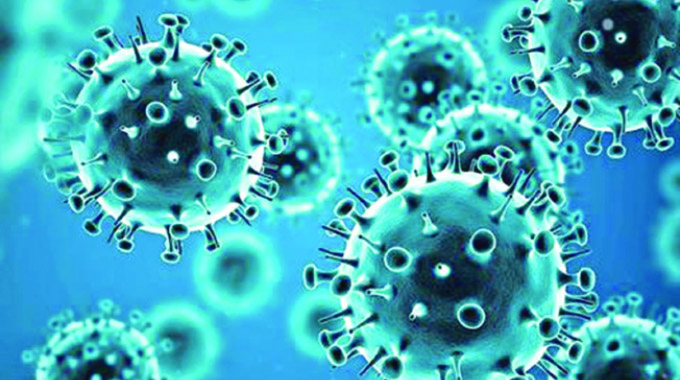The silent pandemic: Resistance to antibiotics

Innocent Njazi
Bachelor Of Science In Nursing Science University Of Zimbabwe, Antimicrobial Resistance Steward (React Africa)
It is now nearly two years since the pandemic started in Wuhan while 5.1 million people who have succumbed to Covid-19 .
World leaders and different organizations have united to combat the virus, there have been success in spreading prevention measures, treatment and statistics of cases and mortality rate.
There is a strong surveillance system on coronavirus and strength in diagnostic capacity.
Indeed Covid-19 is ravaging the world, but there is a silent pandemic which have not being made aware to the public as it must be-antimicrobial resistance.
This week is the World Antimicrobial Awareness Week (18 -24 November) and l have decided to commemorate this day through educating and raising awareness on antimicrobials.
Antimicrobials is an umbrella term which comprise of antibiotics, antiviral, antifungals and antiparasites which are medicines used to treat and prevent infections in humans, animals and plants.
Diseases caused by micro-organism are treated according to the causative agent, bacterial infections are treated with antibiotics.
Antimicrobial resistance is when bacteria ,viruses, fungals and parasites change over time and no longer respond to medicines, making it harder to treat and increasing the risk of disease spread, severe medical conditions and death.
As a result of drug resistance ,antibiotics and other antimicrobials become ineffective to treat infections.
Antibiotic resistance is multi-faceted problem which requires different sectors to tackle it. Misuse and overuse of antibiotics are the main driving factors to resistance.
Over time the bacteria evolve to the extent that the antibiotics won’t be effective. The entire course of antibiotics must be finished, despite resolving of symptoms.
When the entire course of antibiotics is not taken, bacteria adapts to the presence of low dose bacteria and form a population that is resistant to antibiotics. Those who take antibiotics when necessary often when symptoms go away they cease taking them causing resistance to emerge.
Alexander Fleming, the man who discovered the first antibiotic penicillin, gave us an warning in 1940:
“It is not difficult to make microbes resistant to penicillin in the laboratory by exposing them to concentrations not sufficient to kill them, and the same thing has occasionally happened in the body. The time may come when penicillin can be bought by anyone in the shops. Then there is the danger that the ignorant man may easily underdose himself and by exposing his microbes to non-lethal quantities of the drug make them resistant.”
Antibiotics must only be used when prescribed by the health professionals, yet today if there is an minor illness, people are quick to take antibiotics.
Flu is caused by an virus, therefore antibiotics must not be used to treat flu infections, antibiotics kill or stop the growth of bacteria only.
The causes of antibiotic resistance are not only due to imprudence use of antibiotics by humans, but also spring from others sectors like in agriculture.
The misuse of antibiotics in animals as growth promoters and as prophylactic to prevent infections causes antibiotic resistance. Global livestock production is growing expeditiously and has moved towards industrialised systems where antibiotics are used as part of production.
lt is estimated that in the future, two thirds of antimicrobials will be for animal production.
Poor husbandry practices have led farmers to overuse antibiotics, driving the emergence of drug-resistant genes in animal.
This resistant bacteria may also spread to humans, by direct contact and indirectly, for example via the food chain or contaminated water.
This is well known to occur with methicillin-resistant staphylococcus aureus, a common resistant bacteria in swine. Antibiotics are used to treat tuberculosis, pneumonia, malaria and sexually transmitted diseases like gonorrhea. With bacteria becoming resistant, it now harder to treat diseases with antibiotics as they are becoming less effective. Studies revealed that approximately 20 percent of tuberculosis cases globally are estimated to be resistant to at least to one of the first or second line anti-tuberculosis drugs.
The more bacteria are becoming resistance to antibiotics it is limiting treatment options and increasing the costs. There is need to urgently address this global threat , Dr Poonam Khetrapal, regional director WHO South-East Asia Region said
“Immediate action is needed to stop the world from heading towards pre-antibiotic era in which all achievements made in prevention and control of communicable diseases will be reversed.
Common infections and minor injuries which have been treatable for decades may once again kill millions.
Resistance to antibiotics will make complex surgeries and management of several chronic illnesses like cancer, extremely difficult, Currently, at least 700 000 people die every year due to drug-resistance diseases.
A study projected that if inadequate action is taken antimicrobial resistance deaths could rise to 10 million by 2050 and by 2030 antimicrobial resistance could force 24 million people into extreme poverty.
Antimicrobial Resistance lengthen hospital stay hence more specialized and expensive care is needed and more expensive drugs are needed.
An estimates from India state that the cost for treating a resistant bacterial infection is more than a years’ income for a rural worker. Resistance has an impact on the economic, according to the World Bank, inaction on antimicrobial resistance could cause a fall in Gross Domestic Product of between 1.1 % and 3.8 percent by 2050.
Therefore what can we do to curb antimicrobial resistance? To prevent and control the spread of antibiotic resistance, individuals can:
Only use antibiotics when prescribed by a certified health professional.
Never demand antibiotics if your health worker says you don’t need them.
Always follow your health worker’s advice when using antibiotics.
Never share or use leftover antibiotics.
Finish the course even if symptoms disappear
Prepare food hygienically, following Keys to Safer Food (keep clean, separate raw and cooked, cook thoroughly, keep food at safe temperatures, use safe water and raw materials) and choose foods that have been produced without the use of antibiotics for growth promotion or disease prevention in healthy animals
To prevent and control the spread of antibiotic resistance, the agriculture sector can:
Only give antibiotics to animals under veterinary supervision.
Not use antibiotics for growth promotion or to prevent diseases in healthy animals.
Vaccinate animals to reduce the need for antibiotics and use alternatives to antibiotics when available.
Promote and apply good practices at all steps of production and processing of foods from animal and plant sources.
Improve biosecurity on farms and prevent infections through improved hygiene and animal welfare.
The “Global action plan on antimicrobial resistance” has five strategic objectives:
To improve awareness and understanding of antimicrobial resistance.
To strengthen surveillance and research.
To reduce the incidence of infection.
To optimize the use of antimicrobial medicines.
To ensure sustainable investment in countering antimicrobial resistance
Every infectious disease has a potential of becoming resistance to medicines ,if the problem persist we are likely to return to the pre-antibiotic era.
There is need to raise awareness, focus must be on programmes that change human behaviour, optimize antimicrobial use and prevent infection. Covid-19 has taught us we can raise awareness successfully.









Comments